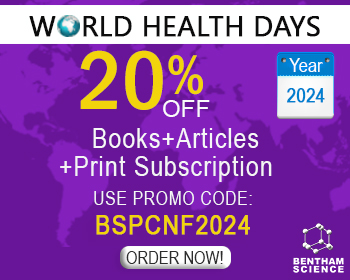Abstract
Non-alcoholic fatty liver disease (NAFLD) is a metabolic disorder characterized by an ectopic accumulation of lipids in at least 5% of hepatocytes. The first phase of the disease, called hepatic steatosis, progresses over time to chronic conditions, such as steatohepatitis, cirrhosis, and finally, hepatic insufficiency and cancer. The accumulation of free fatty acids in hepatocytes, particularly saturated fatty acids, is a key process in the development and progression of NAFLD. Furthermore, the accumulation of oxidative stress markers in NAFLD is closely linked to lipotoxicity due to impaired lipid metabolism and increased generation of reactive oxygen species (ROS). However, endogenous mechanisms are activated early in the liver to protect against lipotoxicity and oxidative stress, thus preventing liver mass loss and disease progression. Thus, in order to develop appropriate therapies, the purpose of this review is to discuss recent data from the literature regarding the importance of intrinsic mechanisms deployed by the liver in protecting itself against the adverse effects related to chronic lipid accumulation and ROS generation.
Keywords: Antioxidant enzymes, Free fatty acids, Lipotoxicity, NAFLD, Oxidative stress, metabolic disorder.
[PMID: 24596725]
[http://dx.doi.org/10.1016/j.jhep.2015.11.004] [PMID: 27062661]
[http://dx.doi.org/10.2174/156652410790963321] [PMID: 20196730]
[http://dx.doi.org/10.1016/j.metabol.2018.11.014] [PMID: 30502373]
[http://dx.doi.org/10.1016/j.clinre.2016.07.005] [PMID: 27597641]
[http://dx.doi.org/10.1371/journal.pone.0173499]
[http://dx.doi.org/10.1002/hep.28431] [PMID: 26707365]
[http://dx.doi.org/10.1186/s12916-017-0806-8] [PMID: 28241825]
[http://dx.doi.org/10.1016/j.jcmgh.2014.11.005] [PMID: 25729762]
[http://dx.doi.org/10.2174/1570161115666170621075619] [PMID: 28669328]
[http://dx.doi.org/10.1016/S0016-5085(98)70599-2] [PMID: 9547102]
[http://dx.doi.org/10.1097/TP.0000000000002480] [PMID: 30300287]
[http://dx.doi.org/10.1056/NEJMra1503519] [PMID: 29166236]
[http://dx.doi.org/10.1016/j.metabol.2015.12.012] [PMID: 26823198]
[http://dx.doi.org/10.1042/CS20170987] [PMID: 29109303]
[http://dx.doi.org/10.1016/j.jff.2018.02.033]
[http://dx.doi.org/10.1016/j.jhep.2014.11.034] [PMID: 25477264]
[http://dx.doi.org/10.1073/pnas.0630588100] [PMID: 12629214]
[http://dx.doi.org/10.1038/ng.257] [PMID: 18820647]
[http://dx.doi.org/10.1002/hep.29273] [PMID: 28520213]
[http://dx.doi.org/10.1016/j.metabol.2016.06.009] [PMID: 27423871]
[http://dx.doi.org/10.5604/01.3001.0010.5282] [PMID: 29055919]
[http://dx.doi.org/10.1016/j.jhep.2016.03.011] [PMID: 27038645]
[http://dx.doi.org/10.1038/ng.2901] [PMID: 24531328]
[http://dx.doi.org/10.1073/pnas.1323785111] [PMID: 24927523]
[http://dx.doi.org/10.1093/hmg/ddx159] [PMID: 28449094]
[http://dx.doi.org/10.1016/j.atherosclerosis.2017.11.033] [PMID: 29232562]
[http://dx.doi.org/10.3727/105221617X15093707969658] [PMID: 29096730]
[http://dx.doi.org/10.1016/j.jhep.2018.01.019] [PMID: 29408694]
[http://dx.doi.org/10.1007/s10620-016-4054-0] [PMID: 26856717]
[http://dx.doi.org/10.1007/s00210-015-1174-6] [PMID: 26449613]
[http://dx.doi.org/10.1016/j.bbalip.2015.03.003] [PMID: 25790917]
[http://dx.doi.org/10.1016/j.cmet.2017.07.009] [PMID: 28768177]
[http://dx.doi.org/10.1016/j.lfs.2018.04.022] [PMID: 29709653]
[http://dx.doi.org/10.1053/j.gastro.2017.05.043] [PMID: 28579536]
[http://dx.doi.org/10.1002/path.4829] [PMID: 27757953]
[http://dx.doi.org/10.1016/j.redox.2017.11.016] [PMID: 29220698]
[http://dx.doi.org/10.1152/ajpendo.00631.2010] [PMID: 21917631]
[http://dx.doi.org/10.1016/j.mito.2017.08.015] [PMID: 28935446]
[http://dx.doi.org/10.1016/j.jhep.2018.03.011] [PMID: 29572095]
[http://dx.doi.org/10.3803/EnM.2017.32.1.6] [PMID: 28116873]
[http://dx.doi.org/10.1016/j.arteri.2014.11.002] [PMID: 25796423]
[http://dx.doi.org/10.1016/j.fct.2014.01.027] [PMID: 24486139]
[http://dx.doi.org/10.1016/j.freeradbiomed.2015.03.019] [PMID: 25841776]
[http://dx.doi.org/10.1016/j.cmet.2015.04.004] [PMID: 25955209]
[http://dx.doi.org/10.1152/ajpendo.00617.2014] [PMID: 26353385]
[http://dx.doi.org/10.1002/jcp.27474] [PMID: 30239004]
[http://dx.doi.org/10.1016/j.jhep.2017.11.014] [PMID: 29154964]
[http://dx.doi.org/10.1016/j.bbadis.2019.165621] [PMID: 31786336]
[http://dx.doi.org/10.1152/ajpendo.90897.2008] [PMID: 19066317]
[http://dx.doi.org/10.1093/carcin/bgq131] [PMID: 20595235]
[http://dx.doi.org/10.1016/j.tem.2017.10.003] [PMID: 29089222]
[http://dx.doi.org/10.1016/j.mce.2017.10.010] [PMID: 29056532]
[http://dx.doi.org/10.1152/ajpendo.00268.2013] [PMID: 23941875]
[http://dx.doi.org/10.1074/jbc.M501159200] [PMID: 15851470]
[http://dx.doi.org/10.1074/jbc.M807616200] [PMID: 19119140]
[http://dx.doi.org/10.1016/j.jhep.2007.09.009] [PMID: 18086506]
[http://dx.doi.org/10.1002/hep.23229] [PMID: 19937697]
[http://dx.doi.org/10.1093/ajcn/87.4.817] [PMID: 18400702]
[http://dx.doi.org/10.1038/srep46658] [PMID: 28436449]
[http://dx.doi.org/10.1016/j.bbalip.2020.158776] [PMID: 32738301]
[http://dx.doi.org/10.1002/hep.28985] [PMID: 27981615]
[http://dx.doi.org/10.1016/j.yexcr.2019.111651] [PMID: 31568762]
[http://dx.doi.org/10.1016/j.bbrc.2015.05.042] [PMID: 26002468]
[http://dx.doi.org/10.3892/br.2014.309] [PMID: 25054002]
[http://dx.doi.org/10.1074/jbc.M805768200] [PMID: 19049983]
[http://dx.doi.org/10.1002/hep.22980] [PMID: 19472314]
[http://dx.doi.org/10.1002/hep.30765] [PMID: 31081165]
[http://dx.doi.org/10.1016/j.brainres.2019.146484] [PMID: 31562840]
[http://dx.doi.org/10.1016/j.devcel.2017.06.003] [PMID: 28697336]
[http://dx.doi.org/10.1016/j.cmet.2017.07.012] [PMID: 28768178]
[http://dx.doi.org/10.1016/S0163-7827(99)00012-0] [PMID: 10793891]
[http://dx.doi.org/10.1016/j.chembiol.2018.11.016] [PMID: 30686757]
[http://dx.doi.org/10.1021/acs.biochem.7b00975] [PMID: 29188717]
[http://dx.doi.org/10.3390/molecules23112862]
[http://dx.doi.org/10.1016/j.clnu.2017.08.031] [PMID: 29249532]
[http://dx.doi.org/10.1053/j.gastro.2018.06.031] [PMID: 29906416]
[http://dx.doi.org/10.1016/j.jnutbio.2017.09.017] [PMID: 29175671]
[http://dx.doi.org/10.1016/j.plefa.2012.12.001] [PMID: 23313470]
[http://dx.doi.org/10.3390/nu11040872] [PMID: 31003450]
[http://dx.doi.org/10.1016/j.mam.2018.03.001] [PMID: 29544992]
[http://dx.doi.org/10.1021/acs.jafc.7b05173] [PMID: 29345914]
[http://dx.doi.org/10.1016/j.clnu.2017.01.003] [PMID: 28161092]
[http://dx.doi.org/10.1152/ajpendo.00438.2016] [PMID: 28270444]
[http://dx.doi.org/10.1007/s00394-019-01953-2] [PMID: 30937580]
[http://dx.doi.org/10.1016/j.freeradbiomed.2013.08.174] [PMID: 23994574]
[http://dx.doi.org/10.1016/j.jcmgh.2021.01.012] [PMID: 33545430]
[http://dx.doi.org/10.1038/s41575-020-00366-5] [PMID: 33093663]
[http://dx.doi.org/10.1152/ajpendo.00052.2019] [PMID: 31430204]
[http://dx.doi.org/10.3892/etm.2018.5730] [PMID: 29456675]
[PMID: 30987865]
[http://dx.doi.org/10.1016/j.taap.2014.02.001] [PMID: 24534255]
[http://dx.doi.org/10.3390/cells9010037] [PMID: 31877771]
[http://dx.doi.org/10.5114/ceh.2020.99528] [PMID: 33145434]
[http://dx.doi.org/10.3389/fendo.2019.00411] [PMID: 31293521]
[http://dx.doi.org/10.1016/j.cld.2015.10.015] [PMID: 27063275]
[http://dx.doi.org/10.1016/j.lfs.2020.118868] [PMID: 33310034]
[http://dx.doi.org/10.1186/s12944-018-0933-z] [PMID: 30611282]
[http://dx.doi.org/10.1080/13543784.2020.1763302] [PMID: 32552182]
[http://dx.doi.org/10.1016/j.biopha.2019.109609] [PMID: 31731192]
[http://dx.doi.org/10.1016/j.bbagrm.2016.03.002] [PMID: 26962021]
[http://dx.doi.org/10.1016/S1097-2765(00)00051-4] [PMID: 11030332]
[http://dx.doi.org/10.1074/jbc.M109.006742] [PMID: 19366697]
[http://dx.doi.org/10.1172/JCI88893] [PMID: 28287408]
[http://dx.doi.org/10.1016/j.molmet.2018.01.005] [PMID: 29361497]
[http://dx.doi.org/10.1053/j.gastro.2017.01.055] [PMID: 28214524]
[http://dx.doi.org/10.1016/j.apsb.2016.07.008] [PMID: 27709009]
[http://dx.doi.org/10.1007/s11154-019-09512-0] [PMID: 31707624]
[http://dx.doi.org/10.3390/ijms21155214] [PMID: 32717871]
[http://dx.doi.org/10.7150/ijbs.56214] [PMID: 33767591]
[http://dx.doi.org/10.1002/mnfr.201900257] [PMID: 31095863]
[http://dx.doi.org/10.1172/JCI76738] [PMID: 25500885]
[http://dx.doi.org/10.1053/j.gastro.2016.08.057] [PMID: 27639801]
[http://dx.doi.org/10.1038/ncomms10166] [PMID: 26670557]
[http://dx.doi.org/10.1016/S0140-6736(19)33041-7]
[http://dx.doi.org/10.2147/HMER.S91709] [PMID: 27621676]
[http://dx.doi.org/10.1021/acs.jmedchem.0c01065] [PMID: 32991173]
[http://dx.doi.org/10.1016/j.biopha.2020.109915] [PMID: 31986416]
[http://dx.doi.org/10.1016/j.fct.2013.11.015] [PMID: 24275089]
[http://dx.doi.org/10.1016/j.bbrc.2016.11.088] [PMID: 28212726]
[http://dx.doi.org/10.1016/j.cmet.2016.10.012] [PMID: 27866836]
[http://dx.doi.org/10.1016/j.jhep.2009.11.030] [PMID: 20347174]
[http://dx.doi.org/10.1098/rstb.2013.0446]
[http://dx.doi.org/10.1016/j.bbabio.2016.10.003] [PMID: 27751905]
[http://dx.doi.org/10.3389/fphys.2015.00036]
[http://dx.doi.org/10.1007/978-3-319-55330-6_20] [PMID: 28551798]
[http://dx.doi.org/10.1210/endo.139.12.6384] [PMID: 9832429]
[http://dx.doi.org/10.1194/jlr.M078469] [PMID: 29203476]
[http://dx.doi.org/10.1007/s00424-012-1078-y] [PMID: 22395410]
[http://dx.doi.org/10.1016/j.biopha.2009.04.047] [PMID: 19864106]
[http://dx.doi.org/10.1016/j.cmet.2014.07.004] [PMID: 25127353]
[http://dx.doi.org/10.1159/000233249] [PMID: 19710539]
[http://dx.doi.org/10.3390/cells8080916]
[http://dx.doi.org/10.1016/j.jff.2017.09.056]
[http://dx.doi.org/10.3390/medicina55020026]
[http://dx.doi.org/10.1155/2018/9547613]
[http://dx.doi.org/10.1074/jbc.M109.093633] [PMID: 20430894]
[http://dx.doi.org/10.4093/dmj.2016.40.4.272] [PMID: 27352152]
[http://dx.doi.org/10.1016/j.bcp.2017.04.014] [PMID: 28414138]
[http://dx.doi.org/10.1016/j.jcmgh.2017.11.016] [PMID: 29552625]
[http://dx.doi.org/10.4062/biomolther.2017.195] [PMID: 29212307]
[http://dx.doi.org/10.1089/ars.2011.3999] [PMID: 21473702]
[http://dx.doi.org/10.1083/jcb.201708007] [PMID: 29669742]
[http://dx.doi.org/10.1152/ajpendo.00577.2011] [PMID: 22829583]
[http://dx.doi.org/10.1093/gerona/glu090] [PMID: 25016531]
[http://dx.doi.org/10.1038/gt.2014.64] [PMID: 25030609]
[http://dx.doi.org/10.1002/hep.29229] [PMID: 28437863]
[http://dx.doi.org/10.1080/13813455.2019.1659827] [PMID: 31475569]
[http://dx.doi.org/10.1002/oby.21348] [PMID: 26612356]
[http://dx.doi.org/10.1016/j.alcohol.2018.12.005] [PMID: 30611703]
[http://dx.doi.org/10.2147/CMAR.S245283] [PMID: 32765079]
[http://dx.doi.org/10.1016/j.jceh.2012.10.009] [PMID: 25755466]
[http://dx.doi.org/10.1016/j.freeradbiomed.2016.12.011] [PMID: 27939935]
[http://dx.doi.org/10.4196/kjpp.2017.21.3.317] [PMID: 28461774]
[http://dx.doi.org/10.1007/s00424-018-02250-3] [PMID: 30617744]
[http://dx.doi.org/10.1016/j.freeradbiomed.2019.12.025] [PMID: 31877356]
[http://dx.doi.org/10.1155/2018/2101562]
[PMID: 24622831]
[http://dx.doi.org/10.1016/j.freeradbiomed.2018.01.028] [PMID: 29378334]
[http://dx.doi.org/10.3390/nu7053938] [PMID: 26007340]
[http://dx.doi.org/10.1152/physrev.00039.2013] [PMID: 24987004]
[http://dx.doi.org/10.1007/s00125-016-4084-3] [PMID: 27628106]
[http://dx.doi.org/10.1186/s12944-018-0815-4]
[http://dx.doi.org/10.1016/S0891-5849(02)01360-6] [PMID: 12566075]
[http://dx.doi.org/10.1016/S0006-291X(03)00734-4] [PMID: 12745070]
[http://dx.doi.org/10.1016/j.redox.2016.05.003] [PMID: 27262435]
[http://dx.doi.org/10.18632/oncotarget.24300] [PMID: 29515790]
[http://dx.doi.org/10.1016/j.jcma.2015.09.003] [PMID: 26897098]
[http://dx.doi.org/10.1111/j.1742-1241.2009.02327.x] [PMID: 20584230]
[http://dx.doi.org/10.1002/hep.30368] [PMID: 30506586]
[http://dx.doi.org/10.3390/nu12082435] [PMID: 32823621]
[http://dx.doi.org/10.1016/j.ctcp.2020.101281] [PMID: 33321448]
[http://dx.doi.org/10.1016/j.ctim.2019.102283] [PMID: 31987259]
[http://dx.doi.org/10.1007/s12325-020-01251-y] [PMID: 32065376]
[http://dx.doi.org/10.1186/s12944-020-01283-x] [PMID: 32430018]
[http://dx.doi.org/10.1002/ptr.6637] [PMID: 32067271]



























